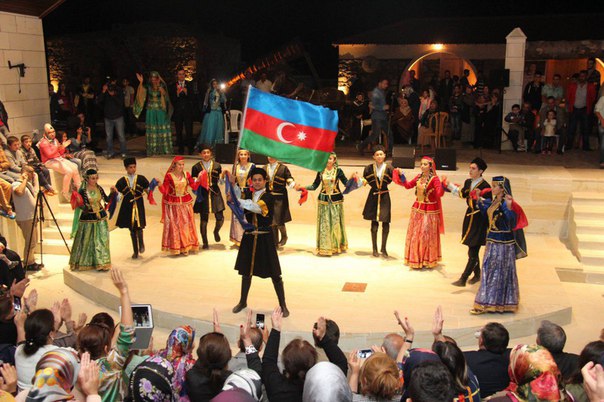Azerbaijan to submit to UNESCO group dance Yalli in 2017

By Amina Nazarli
Azerbaijan’s traditional dances can be awarded protection by the UN cultural organization, as the country will soon appeal for including the dances “Kocheri” and “Yalli” into the UNESCO Representative List of Intangible Cultural Heritage of Humanity.
Ph.D Atesh Ahmadli, a senior research fellow at the Azerbaijani National Academy of Sciences (ANAS), said the country will send the relevant documents for approval of these dances as cultural heritage of the Azerbaijani people.
Ahmadli told Trend that each country has the right to make a nomination only once in two years for approval into UNESCO's list of "intangible heritage" – centuries-old practices which are being eroded by globalization and urbanization
The UN agency is better known for awarding world heritage status to monuments and natural wonders, but starting 2006 it has also recognized elements of living heritage, such as songs, festivals, languages and religious rites.
Last year unique copper craftsmanship of Ismayilli region’s small village of Lahij was included in the UNESCO Representative List of Intangible Cultural Heritage of Humanity.
That’s why Azerbaijan will be able to submit an application for the national dances in 2017, Ahmadli said.
So far, UNESCO’s Heritage list includes eight samples of Azerbaijani heritage including the Novruz holiday, Azerbaijani mugham, Azerbaijani ashig art, the Azerbaijani carpet, traditional Kalagayi headwear, national musical instrument “tar”, Lahij’s copper craftsmanship and Chovgan game.
Kocheri is a kind of ancient Azerbaijani dance “Yalli”, which is depicted on the rock carvings in Gobustan dating to 10,000-8,000 years BC.
The famous “Divani luget” dictionary of the 11th century by eminent Turkish philologist Mahmud Kashgari, includes the word “kocheri”, meaning “koch-goch” (male ram), and the word “kochmek”, meaning "to move from one place to another".
The initial form of Yalli, performed around a ceremony bonfire, have the meaning of hot, light and meal. The word “yal” in Azerbaijani means row, line of chain.
Today, Yalli is performed as cheerful circular dance, often accompanied by choral singing at the weddings. Dancers hold hands or shoulders with each other and perform synchronous rhythmic motion, raising and lowering their arms.
Yalli is performed under different rhythms, and have a number of kinds including kochari, uchayag, tello, tenzere and galadangalaya.
Reminding that these dances are related to Turkish traditions, Ahmadli said that hostile neighbor Armenia wants to assign Kocheri as Armenian national value.
Armenia, which occupied 20 percent of Azerbaijani territory in late 1990s, is also targeting the ancient culture and traditions of the Azerbaijani people.
Last year Armenia attempted to present Kocheri as an Armenian folklore dance at the 10th session of the UNESCO Intergovernmental Committee for Safeguarding of the Intangible Cultural Heritage held in Namibia.
The committee returned the nominated file to the Armenian side, which received a negative assessment from the organization based on five criteria.
The Azerbaijan Copyright Agency prevented an attempt in 2011 when an Armenian representative tried to introduce the dance as "Armenian" during Eurovision Song Contest. The Agency launched an investigation and submitted to the World Intellectual Property Organization a detailed reference based on historical data and etymology of the “kochari” word.
Many times, Armenia tried to grab Azerbaijani songs “Sari Gelin” “Susen Sunbul”, dances “Yalli,” “Uzundere,” “Vagzali,” as well as ancient musical instruments like tar, balaban, zurna and even works by prominent Azerbaijani composers such as Uzeyir Hajibeyli, Kara Karayev and Fikret Amirov.
--
Amina Nazarli is AzerNews’ staff journalist, follow her on
Twitter: @amina_nazarli
Follow us on Twitter @AzerNewsAz
Here we are to serve you with news right now. It does not cost much, but worth your attention.
Choose to support open, independent, quality journalism and subscribe on a monthly basis.
By subscribing to our online newspaper, you can have full digital access to all news, analysis, and much more.
You can also follow AzerNEWS on Twitter @AzerNewsAz or Facebook @AzerNewsNewspaper
Thank you!
